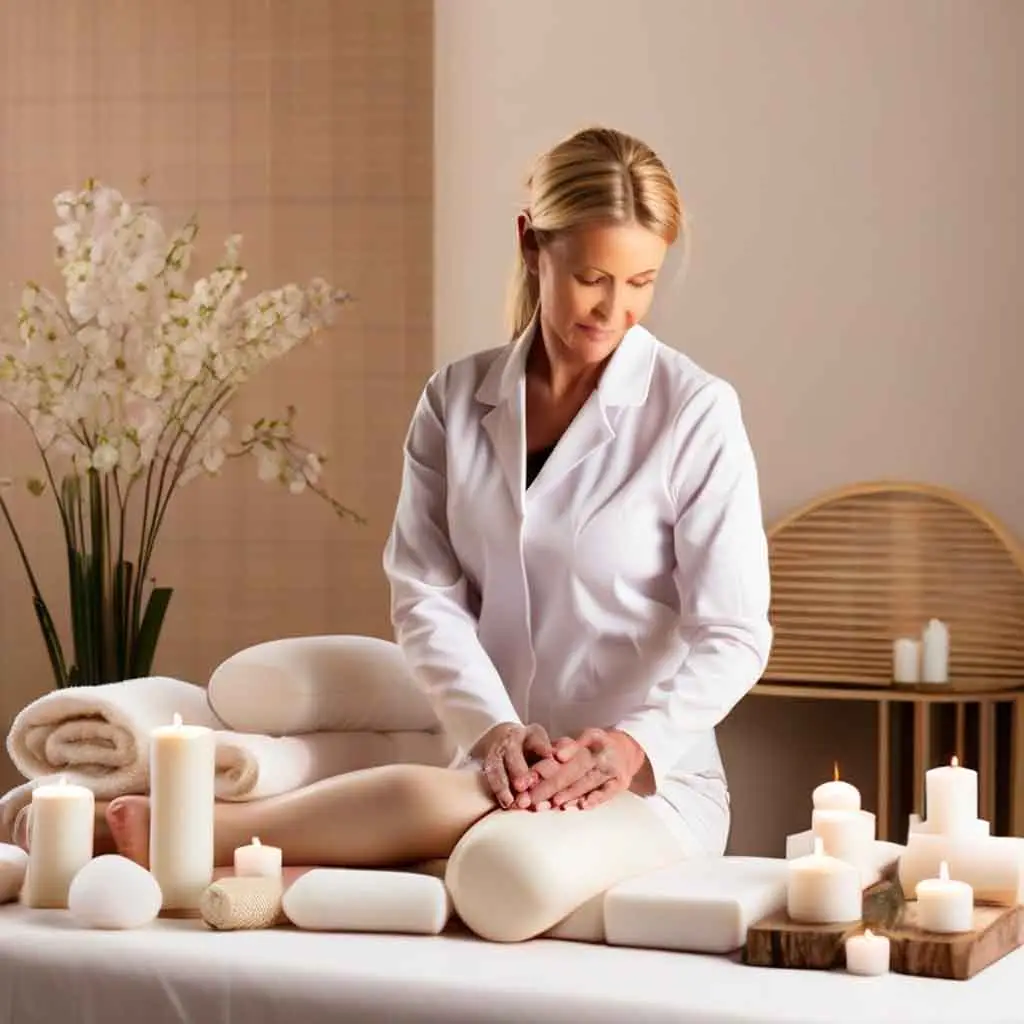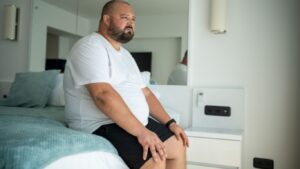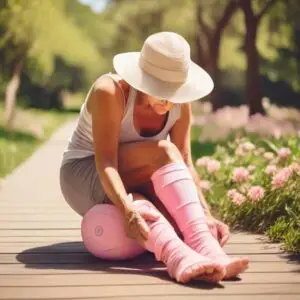The Role of Massage Therapy in Lymphedema Management
A Holistic Approach to Lymphedema Management
Lymphedema is a chronic condition involving the buildup of lymphatic fluid, resulting in swelling, discomfort, and limited mobility, most commonly in the arms and legs. Though it has no cure, effective management can significantly improve the quality of life. Massage therapy, particularly Manual Lymphatic Drainage (MLD), plays a central role in lymphedema treatment, promoting fluid drainage, reducing swelling, and preventing complications.
In this article, we’ll explore the latest trends, techniques, and benefits of massage therapy for lymphedema. We’ll also discuss how personalized care and innovative tools transform this field, offering patients better outcomes and improved quality of life. Whether you are a patient, caregiver, or practitioner, this guide provides comprehensive, actionable insights to navigate lymphedema management.
What is Lymphedema?
Lymphedema occurs when the lymphatic system becomes impaired, leading to an accumulation of lymphatic fluid in tissues. It may develop as primary lymphedema due to genetic factors or secondary lymphedema following surgery, radiation, or infections. Breast cancer patients often experience lymphedema after lymph node removal or radiation therapy.
Common symptoms include:
- Persistent swelling in the arms, legs, or affected area
- Heaviness or tightness in the limb
- Skin changes, including thickening or hardening (fibrosis)
- Discomfort or pain
Without proper management, lymphedema can worsen, increasing the risk of infections such as cellulitis. Therefore, early diagnosis and consistent treatment are essential.
What is Manual Lymphatic Drainage (MLD)?
MLD is a specialized massage therapy that gently stimulates the lymphatic system, promoting the drainage of excess fluid from swollen areas. Dr Emil Vodder developed this technique in the 1930s, and it has since become a cornerstone of lymphedema treatment.
How Does MLD Work?
- It uses gentle, rhythmic strokes to stimulate lymphatic vessels.
- Encourages lymph flow toward functioning lymph nodes for drainage.
- It helps prevent fibrosis by maintaining healthy tissue.
- Reduces the risk of infections by improving circulation.
MLD is most effective when integrated with other therapies, such as compression garments and physical therapy.
Current Trends in Massage Therapy for Lymphedema
1. Personalized Treatment Plans
Therapists now develop customized MLD sessions based on the patient’s symptoms, health history, and lifestyle. These personalized plans ensure treatment addresses each patient’s unique challenges, improving outcomes.
2. Digital Health Integration
Innovative digital health tools allow patients to monitor their progress. Apps track swelling levels, provide reminders for therapy sessions, and offer self-massage guidance between appointments.
3. Combined Decongestive Therapy (CDT)
CDT, which combines MLD with compression therapy, skincare routines, and physical exercises, has become the gold standard in lymphedema care. This multifaceted approach ensures comprehensive management by addressing all aspects of the condition.
Benefits of Massage Therapy in Lymphedema Management
1. Reduces Swelling and Enhances Mobility
MLD stimulates lymphatic flow, reducing fluid buildup and easing swelling. This improvement allows patients to regain mobility and flexibility in the affected limb.
2. Prevents Infections
Regular massage therapy improves circulation, reducing the risk of infections like cellulitis, a common complication for lymphedema patients.
3. Promotes Emotional Well-Being
In addition to physical benefits, massage therapy reduces stress and improves emotional well-being. The calming nature of MLD promotes relaxation, helping patients manage the psychological impact of living with a chronic condition.
How to Find a Certified Lymphedema Therapist
Choosing the right therapist is crucial to achieving the best outcomes. Look for specialists with Certified Lymphedema Therapist (CLT) credentials, ensuring they have the required training to perform MLD effectively.
1. Look for Certification
Therapists with the CLT credential have undergone comprehensive training in MLD and lymphedema management, ensuring they can provide high-quality care.
2. Ask for Referrals
Primary care doctors, oncologists, or local support groups often provide recommendations for qualified lymphedema therapists.
3. Check Reviews and Testimonials
Reading patient reviews online offers valuable insights into the experience and effectiveness of a therapist’s care.
When to Start Massage Therapy for Lymphedema
Early intervention is key to preventing complications and improving long-term outcomes. Consult a lymphedema specialist immediately if you experience persistent swelling, tightness, or discomfort.
How Often Should You Receive MLD?
The frequency of MLD sessions varies based on the severity of symptoms and individual patient needs.
- Mild cases: Sessions once a week or as required for maintenance.
- Severe cases: Frequent sessions, up to 2-3 times per week, until symptoms stabilize.
Your therapist will help determine the ideal frequency based on your condition.
Complementary Treatments to Enhance MLD
1. Compression Garments
After MLD sessions, wearing compression garments helps maintain the benefits by preventing fluid buildup. These garments are available as sleeves, stockings, or custom-made pieces.
2. Physical Therapy and Exercise
Incorporating gentle exercises such as yoga, swimming, or walking improves circulation, complementing the effects of MLD.
3. Nutrition and Hydration
A healthy diet rich in anti-inflammatory foods and proper hydration supports lymphatic function, enhancing the benefits of massage therapy.
New Developments in Lymphedema Massage Techniques
1. Self-Massage for Maintenance
Many therapists now teach patients how to perform self-MLD techniques at home, empowering them to manage their symptoms between professional sessions.
2. Use of Low-Level Laser Therapy (LLLT)
Some lymphedema therapists are incorporating LLLT into their massage routines. This non-invasive treatment uses light energy to stimulate lymphatic flow and reduce swelling.
3. AI-Assisted Therapy Tools
AI-based tools are emerging to monitor swelling levels and guide patients through self-massage routines in real-time, providing adaptive care.
Common Challenges and How to Overcome Them
1. Consistency in Treatment
Maintaining regular therapy sessions can be challenging. Digital reminders and self-massage training help patients stay on track.
2. Financial Barriers
Lymphedema care, including MLD, can be costly. Some insurance plans cover therapy sessions, but patients should check with providers for coverage details and explore payment plans if needed.
3. Emotional Impact
Living with a chronic condition like lymphedema can take an emotional toll. Support groups and counselling services provide valuable emotional support for patients.
Conclusion: Key Takeaways
Massage therapy, particularly Manual Lymphatic Drainage (MLD), is essential in managing lymphedema by promoting fluid drainage, reducing swelling, and preventing complications. With personalized care plans, digital tools, and AI-assisted solutions, massage therapy continues to evolve, offering patients better outcomes and improved quality of life. Combining MLD with complementary treatments like compression garments and exercise ensures comprehensive care. Patients can empower themselves through self-massage techniques, staying consistent in their treatment, and enjoying the benefits of modern lymphedema care.
FAQs
1. Is massage therapy effective for lymphedema?
Manual Lymphatic Drainage (MLD) effectively reduces swelling and improves lymphatic flow.
2. How often should I receive MLD sessions?
The frequency depends on your symptoms. Mild cases may need weekly sessions, while severe cases require more frequent therapy.
3. Can I perform a lymphatic massage at home?
Yes, with proper training from a certified therapist, patients can learn self-massage techniques to manage symptoms between professional sessions.
4. Does insurance cover MLD sessions?
Some insurance plans cover MLD sessions, but coverage varies. Check with your provider for specific details.
5. What other treatments complement MLD?
Compression garments, physical therapy, and a healthy diet complement MLD, enhancing its effectiveness and maintaining results.






1 thought on “The Role of Massage Therapy in Lymphedema Management”
I really value the thought you put into this post! It’s not only interesting but also very useful
for people who are dedicated to improving their health.
I’m going to share this with my readers on my blog about electric
massagers because I know it’s a fantastic guide. Appreciate
it